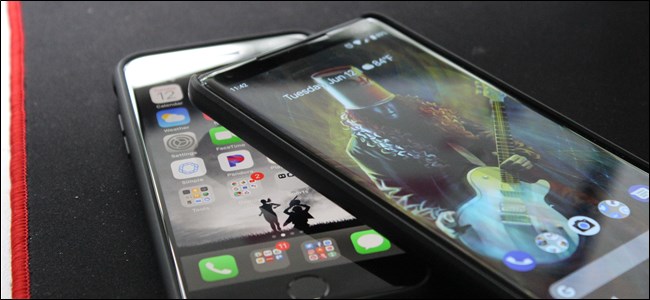
Android and iOS are constantly running in parallel, copying (and expanding on) each other’s features. But they’re not always at parity. Here’s a closer look at a handful of things Android can do that you won’t find on iPhone—even after you upgrade to iOS 12 this Fall.
Android和iOS不断并行运行,互相复制(并扩展)彼此的功能。 但是他们并不总是平价。 仔细看一下即使在今年秋天升级到iOS 12之后,Android仍无法在iPhone上找到的一些功能。
Before we jump into some features, however, let’s first make one thing clear: this isn’t a flame war. Our intention is not to say “Android is better than iOS” because that’s not the case. Both operating systems are great, and each one has its own standout features.
但是,在进入某些功能之前,我们首先要弄清楚一件事:这不是火焰战争。 我们的意图不是说“ Android比iOS更好”,因为事实并非如此。 两种操作系统都很棒,并且每个都有自己的杰出功能。
多用户和访客访问 (Multiple Users and Guest Access)

You can hand any Android device running Lollipop (Android 5.x) or newer to another person and they can sign in, have access to their apps, info, and the like—all without messing with the primary account on the phone.
您可以将任何运行Lollipop(Android 5.x)或更高版本的Android设备移交给他人,他们可以登录,访问其应用程序,信息等,所有这些都无需弄乱手机上的主要帐户。
If you just want to let someone check out your phone without worrying about all your personal info showing up front and center, you can also use Guest Mode. This basically fires up a stock instance of Android without needing to log in, allowing someone to use your phone for simple tasks while keeping your stuff separate.
如果您只想让某人签出您的电话而不必担心您的所有个人信息都显示在前面和中间,那么您也可以使用访客模式。 基本上,这无需启动即可启动Android的库存实例,从而使某人可以将您的手机用于简单的任务,同时又将您的东西分开。
If you want to let someone use your iPhone, well, you’re going to have to hand it over as-is. One could argue that there’s no real need for a guest mode or multi-user access on phones since they’re designed to be single-user devices in the first place, and that’s a fine take. But tablets are a different story. Even if multiple user/guest access never showed up on iPhones, it could be very useful on iPads.
如果您想让某人使用您的iPhone,那么您将必须按原样移交它。 有人可能会说有一个为手机上,因为它们被设计成为摆在首位单用户设备来宾模式或者多用户访问没有真正的需要,这是一个很好拿。 但是平板电脑则是另一回事。 即使iPhone上从未出现过多用户/来宾访问,在iPad上它也可能非常有用。
直接USB访问和真实文件系统 (Direct USB Access and a Real File System)
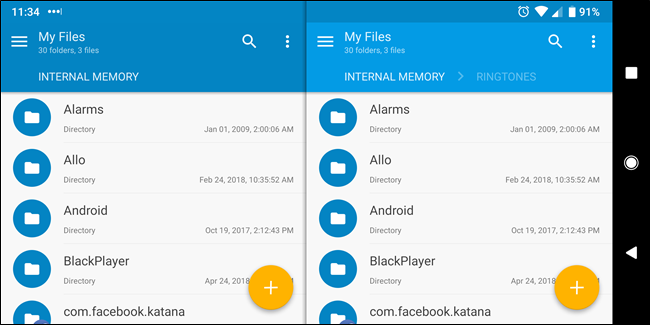
If you plug an Android device up to a computer, you can directly access all files and folders found within its local storage in the same way that you would any other drive connected to your computer. If you do the same thing with an iOS device, you basically just get access to camera contents.
如果将Android设备插入计算机,则可以直接访问在其本地存储中找到的所有文件和文件夹,就像连接到计算机上的任何其他驱动器一样。 如果使用iOS设备执行相同的操作,则基本上只能访问相机内容。
The same thing applies to file managers installed on the device. iOS comes with one out of the box, but it’s extremely limited, only showing “recent” files and providing no true file system access. Conversely, if you install a file manager on Android—and there are dozens in the Play Store—you have full access to the entire storage partition. You can cut, copy, move, and delete files as you will, just like you can on a computer.
这同样适用于设备上安装的文件管理器。 iOS开箱即用,但功能极为有限,仅显示“最新”文件,不提供真正的文件系统访问权限。 相反,如果您在Android上安装了文件管理器(Play商店中有数十个文件管理器),则您可以完全访问整个存储分区。 您可以像在计算机上一样随意剪切,复制,移动和删除文件。
This is especially useful forexternal drives. On Android, you simply plug a drive into your phone and use it (which may require a dongle); but on iOS, each drive requires its own app for any sort of file management. It’s convoluted and far more confusing than it should be.
这对于外部驱动器特别有用。 在Android上,您只需将驱动器插入手机并使用( 可能需要一个加密狗)即可; 但是在iOS上,每个驱动器都需要使用自己的应用程序来进行各种文件管理。 它令人费解,而且比应有的混乱得多。
有意义的主屏幕自定义 (Meaningful Home Screen Customization)
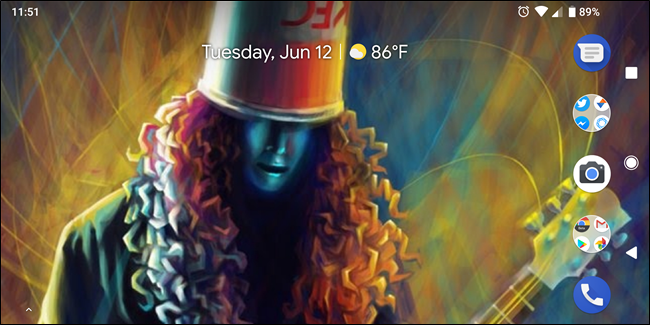
On iOS, you can move icons around and group them into folders. That’s useful, but not as useful as it could be. On Android, for example, you can not only group icons together in folders, but completely redesign how your home screens work by adding widgets that place meaningful information where you need it.
在iOS上,您可以移动图标并将其分组到文件夹中。 那是有用的,但没有应有的作用 。 例如,在Android上,您不仅可以将文件夹中的图标分组在一起,还可以通过添加可在需要的地方放置有意义信息的小部件来完全重新设计主屏幕的工作方式。
To take things even further, there are a slew of third-party launchers available in the Play Store with a wide range of features that really let you take control of your home screen layout. You can change icon size, grid size, and so much more. There are even entire communities dedicated to nothing but home screen design and versatility. The possibilities here are pretty endless—if you can think it up, you can do it on Android.
为了进一步发展,Play商店中提供了许多第三方启动器,这些启动器具有多种功能, 真正可以让您控制主屏幕的布局。 您可以更改图标大小,网格大小等。 甚至有整个社区致力于主屏幕设计和多功能性。 这里的可能性是无穷无尽的 -如果您可以考虑一下,则可以在Android上实现。
默认应用选择 (Default App Choices)
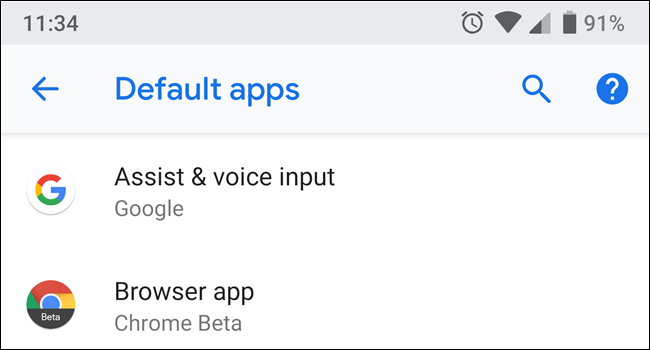
If you download a new browser on Android, you can set it as your default choice for opening links. The same goes for the keyboard, messaging app, home screen, phone app, digital assistant, and more. And you’re free to change this as you see fit.
如果您在Android上下载新的浏览器,则可以将其设置为打开链接的默认选项。 键盘,消息传递应用程序,主屏幕,电话应用程序,数字助理等也是如此。 您可以随意更改此设置。
On iOS, you basically get what you’re given. You can download other browsers, but you can’t set them as your default. The same thing goes for the keyboard. As long as multiple options are available, there should be a way to specify which one you’d prefer to use as your primary.
在iOS上,您基本上会得到所得到的。 您可以下载其他浏览器,但不能将它们设置为默认浏览器。 键盘也一样。 只要有多个选项可用,就应该有一种方法可以指定您希望使用哪个作为主要选项。
始终显示的信息一目了然 (Always-on Display for At-A-Glance Info)
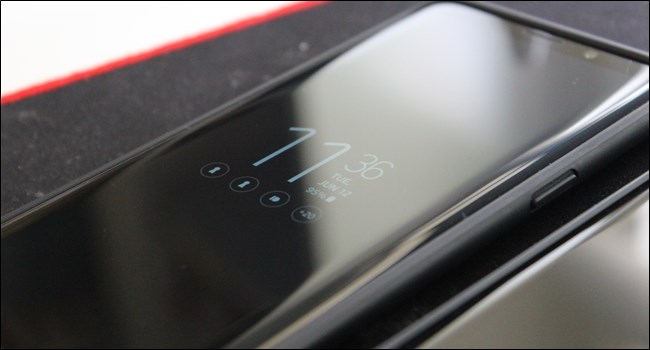
There’s something absolutely satisfying about being able to glance at your phone and see the time, date, notifications, and more all without having to even touch it. This is a relatively new feature for Android, but it’s one that becomes invaluable once you get used to it.
能够一目了然地看手机,甚至无需触摸即可查看时间,日期,通知等所有信息,这绝对让人感到满意。 这是Android的相对较新的功能,但是一旦您习惯了,它就变得无价。
Many new Android phones, like the Pixel 2 and Galaxy S9, have always-on displays that show quick-glance info. You can, of course, turn it off if you don’t like it, and Samsung even lets you customize it or set it to be automatically disabled at a certain time (like overnight).
许多新的Android手机(例如Pixel 2和Galaxy S9)都始终处于显示状态,可显示快速浏览的信息。 当然, 如果您不喜欢它 ,也可以将其关闭 ,三星甚至允许您自定义它或将其设置为在特定时间(例如一整夜)自动禁用。
The closest thing you’ll get on iOS is rise-to-wake, which turns the display on when you pick the phone up. That’s useful, but just glancing down at your phone is nicer.
您在iOS上获得的最接近的东西是起床唤醒,当您拿起手机时,它将打开显示屏。 这很有用,但是只要瞥一眼手机就更好了。
多窗口支持真正的多任务处理 (Multi-Window Support for True Multitasking)
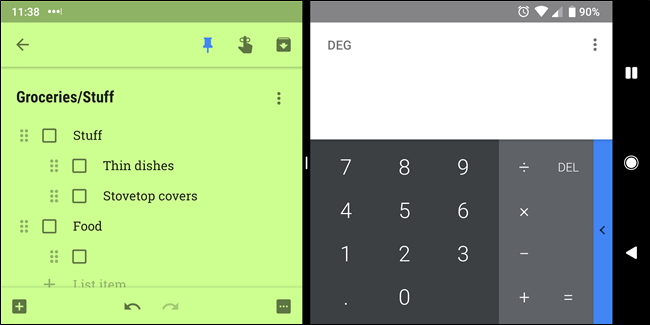
Starting with Android Nougat (7.x), Google implemented the ability to run two apps side-by-side on the screen. And while it doesn’t sound like something you’d ever use (why would you want to run two apps on your tiny phone screen), it really is a useful feature when you need it. For example, you can see your grocery list and calculator for keeping tabs on the cost at the same time. That’s a game changer. Plus, it becomes even more useful on a tablet.
从Android Nougat(7.x)开始,Google实施了在屏幕上并排运行两个应用程序的功能。 虽然听起来好像您永远不会使用某些东西(为什么要在小巧的手机屏幕上运行两个应用程序),但在需要时它确实是一个有用的功能。 例如,您可以看到您的购物清单和计算器,以便同时查看费用。 那是改变游戏规则的人。 另外,它在平板电脑上变得更加有用。
Now, this feature is available on iOS—but only on the iPad. It makes a lot of sense on the bigger screen of a tablet, but don’t sell this feature short—it’s one that makes a lot of sense on phones too, especially if you use something like a Plus model.
现在,此功能在iOS上可用,但仅在iPad上可用。 在平板电脑的大屏幕上,这很有用,但不要短时间出售此功能-这在手机上也很有用,尤其是在使用Plus模式的情况下。
翻译自: https://www.howtogeek.com/355673/six-android-features-you-wont-find-on-iphone-even-after-ios-12/





















 11万+
11万+

 被折叠的 条评论
为什么被折叠?
被折叠的 条评论
为什么被折叠?








